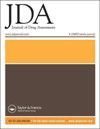A targeted approach to reducing rates of discontinuation and dose reduction in patients receiving sorafenib or regorafenib
IF 2.4
引用次数: 0
Abstract
Abstract Background: Sorafenib and regorafenib are oral multikinase inhibitors used to treat some cancers, but adverse events for both drugs are common and often cause patients to discontinue therapy or reduce their dose within several months of initiating therapy. Pharmacists have the potential to prevent discontinuation by closely monitoring and addressing patients’ adverse reactions. Aims: To assess whether a pharmacist-initiated tailored intervention reduced patient discontinuations and dose reductions due to adverse reactions from sorafenib and regorafenib. Methods: We conducted a historically controlled intervention (initiated Aug 2017) to detect and address adverse events in patients prescribed sorafenib and regorafenib. All patients who initiated therapy after August 2017 were in the intervention group (IG); at treatment initiation, IG patients received initial pharmacist counseling and a welcome kit containing educational materials, urea based creams, therapeutic socks and pill container (sorafenib only). During the 90 days after initiating treatment, pharmacists called IG patients six times to conduct assessment questionnaires, designed to detect common adverse reactions at each interval. Pharmacists addressed adverse events by providing additional counseling, referring patients for clinic appointment or requesting ancillary medications. The comparison group (CG) patients initiated therapy between September 2016 and August 2017. CG patients only received pharmacist counseling at treatment initiation. We collected patient demographics and treatment indication, and compared how many patients discontinued or reduced dose in the IG vs the CG. Results: We assessed 33 patients (16 IG vs 17 CG). Most were female (61%) and White (88%); median age 53 years. Common indications were hepatocellular carcinoma (36%), acute myeloid leukemia (30%) and desmoid tumor (21%). In the 90 day follow-up, IG had lower rates of treatment discontinuation (13% vs 29%) and dose reduction due to side effects (13% vs 18%) than CG. Combined events of either discontinuation or dose reduction due to side effects were less frequent in the patients in the IG than the CG (25% vs 65%). Conclusions: Patients treated with sorafenib or regorafenib were less likely to discontinue therapy or reduce doses due to adverse reactions after receiving a pharmacist-led phone intervention. Findings suggest tailored phone assessments are effective in detecting and treating adverse reactions, thus enabling patients to remain on therapy longer and without dose modification.降低索拉非尼或瑞戈非尼患者停药率和剂量减少的靶向方法
摘要背景:索拉非尼和瑞戈非尼是用于治疗某些癌症的口服多激酶抑制剂,但这两种药物的不良事件很常见,通常会导致患者在开始治疗后的几个月内停止治疗或减少剂量。药剂师有可能通过密切监测和处理患者的不良反应来防止停药。目的:评估药剂师启动的量身定制的干预措施是否减少了索拉非尼和瑞戈非尼不良反应导致的患者停药和剂量减少。方法:我们进行了一项历史对照干预(始于2017年8月),以检测和解决索拉非尼和瑞戈非尼处方患者的不良事件。2017年8月后开始治疗的所有患者均属于干预组(IG);在治疗开始时,IG患者接受了最初的药剂师咨询和欢迎试剂盒,其中包含教育材料、尿素乳膏、治疗袜和药丸容器(仅索拉非尼)。90年代 在开始治疗几天后,药剂师给IG患者打了六次电话,进行评估问卷,旨在检测每个间隔的常见不良反应。药剂师通过提供额外的咨询、转诊患者预约诊所或要求辅助药物来解决不良事件。对照组(CG)患者于2016年9月至2017年8月开始接受治疗。CG患者仅在治疗开始时接受药剂师咨询。我们收集了患者的人口统计数据和治疗指征,并比较了有多少患者停用或减少了IG和CG的剂量。结果:我们评估了33例患者(16例IG vs 17例CG)。大多数是女性(61%)和白人(88%);中位年龄53 年。常见的适应症为肝细胞癌(36%)、急性髓系白血病(30%)和硬纤维瘤(21%)。在90年代 在第二天的随访中,IG的停药率(13%对29%)和因副作用而减少的剂量(13%对18%)低于CG。IG组患者因副作用而停药或减少剂量的联合事件发生率低于CG组(25%对65%)。结论:接受索拉非尼或瑞戈非尼治疗的患者在接受药剂师主导的电话干预后,不太可能因不良反应而停止治疗或减少剂量。研究结果表明,量身定制的电话评估在检测和治疗不良反应方面是有效的,从而使患者能够在不改变剂量的情况下更长时间地接受治疗。
本文章由计算机程序翻译,如有差异,请以英文原文为准。
求助全文
约1分钟内获得全文
求助全文

 求助内容:
求助内容: 应助结果提醒方式:
应助结果提醒方式:


